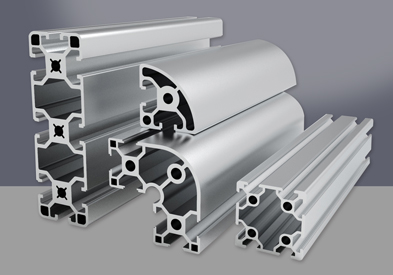
Anodized aluminum profiles are widely used in various industries, including construction, transportation, and electronics, due to their excellent performance and durability. These profiles are made by anodizing aluminum, a process that creates a protective oxide layer on the metal’s surface, making it resistant to corrosion, wear, and weathering. This article will explore the benefits of anodized aluminum profiles for seal structures, their applications, and the advantages they offer over other materials.
Benefits of Anodized Aluminum Profiles
Aluminum profiles are widely used in construction, transportation, and electronics due to their lightweight, high strength, and corrosion resistance. The anodizing process further enhances these properties, making anodized aluminum profiles a popular choice for applications that require durability and longevity. Below are some key benefits of anodized aluminum profiles:
Corrosion Resistance
Anodized aluminum profiles have a protective oxide layer that prevents corrosion, even in harsh environments. This makes them ideal for outdoor applications, such as building facades, railings, and window frames, where they are exposed to moisture, salt, and pollution. The anodized layer is also resistant to acidic and alkaline substances, making it suitable for use in chemical plants and laboratories.
Wear Resistance
The anodized layer on aluminum profiles is harder than the base metal, making it more resistant to wear and scratches. This property is particularly important for applications that involve frequent handling, such as doors, windows, and furniture. Anodized aluminum profiles maintain their appearance and functionality over time, reducing maintenance costs and extending the product’s lifespan.
Weathering Resistance
Anodized aluminum profiles retain their color and gloss even after prolonged exposure to sunlight and UV radiation. This makes them an excellent choice for outdoor structures, such as pergolas, canopies, and signage, that require long-term durability and aesthetic appeal. Anodized aluminum profiles are available in a wide range of colors and finishes, allowing designers to achieve the desired look for their projects.
Low Maintenance
Due to their corrosion and wear resistance, anodized aluminum profiles require minimal maintenance compared to other materials. They do not need to be painted or coated, and can be cleaned with mild soap and water. This reduces the cost and effort associated with maintaining the appearance of the profiles, making them an economical choice for long-term use.
Applications of Anodized Aluminum Profiles
Anodized aluminum profiles are used in a wide range of applications due to their durability, versatility, and aesthetic appeal. Some common applications of anodized aluminum profiles include:
Architectural Structures
Anodized aluminum profiles are widely used in architectural structures, such as curtain walls, cladding, and sunshades, due to their lightweight, strength, and corrosion resistance. The anodized layer provides additional protection against weathering, ensuring that the profiles maintain their appearance and functionality over time. Anodized aluminum profiles are available in a variety of colors and finishes, allowing architects and designers to create visually striking and durable structures.
Transportation
Anodized aluminum profiles are used in the transportation industry for various applications, such as railings, luggage racks, and seating components. The profiles’ high strength-to-weight ratio makes them ideal for reducing the overall weight of vehicles, improving fuel efficiency and reducing emissions. The anodized layer provides additional protection against wear and corrosion, ensuring that the profiles can withstand the rigors of daily use and exposure to the elements.
Electronics
Anodized aluminum profiles are used in the electronics industry for applications that require lightweight, high-strength, and EMI shielding properties. The anodized layer provides additional protection against corrosion and wear, ensuring that the profiles can withstand the harsh conditions of electronic devices. Anodized aluminum profiles are also available in a variety of colors and finishes, allowing electronics manufacturers to create visually appealing and durable products.
Furniture
Anodized aluminum profiles are used in the furniture industry for applications such as table legs, chair frames, and shelving units. The profiles’ high strength-to-weight ratio makes them ideal for reducing the overall weight of furniture, making it easier to move and transport. The anodized layer provides additional protection against wear and scratches, ensuring that the furniture maintains its appearance and functionality over time.
Advantages of Anodized Aluminum Profiles
Anodized aluminum profiles offer several advantages over other materials, making them an attractive choice for a wide range of applications. Some of the key advantages of anodized aluminum profiles include:
Lightweight
Anodized aluminum profiles are lightweight, making them easy to handle, transport, and install. This property is particularly important for applications that require a high strength-to-weight ratio, such as transportation and furniture. The profiles’ lightweight nature also reduces the overall weight of structures, vehicles, and products, improving fuel efficiency and reducing emissions.
High Strength
Anodized aluminum profiles have a high strength-to-weight ratio, making them stronger than other materials of similar weight. This property is particularly important for applications that require structural integrity and durability, such as architectural structures and transportation. The profiles’ high strength also allows them to withstand heavy loads and harsh conditions without deforming or breaking.
Customizable
Anodized aluminum profiles are available in a wide range of colors and finishes, allowing designers to create visually striking and durable products. The anodizing process can be used to create a variety of surface textures, such as matte, brushed, and polished, to achieve the desired look for a project. Anodized aluminum profiles can also be painted or coated with other materials to further customize their appearance.
Recyclable
Aluminum is one of the most recyclable materials in the world, with a recycling rate of over 90%. Anodized aluminum profiles can be easily recycled at the end of their lifespan, reducing the environmental impact of manufacturing and disposal. Recycled aluminum requires only 5% of the energy needed to produce new aluminum, making it an environmentally friendly choice for sustainable design and construction.
Conclusion
Anodized aluminum profiles are a durable and versatile material that offers several advantages over other materials. They are widely used in construction, transportation, electronics, and furniture for applications that require lightweight, high strength, and corrosion resistance. The anodizing process further enhances these properties, making anodized aluminum profiles an attractive choice for projects that require long-term durability and aesthetic appeal. By understanding the benefits and applications of anodized aluminum profiles, designers and manufacturers can make informed decisions about using this material in their projects.









